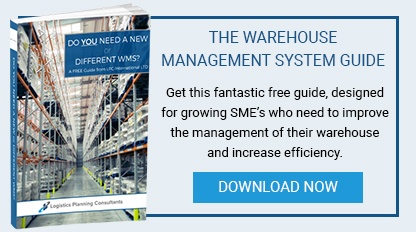 A summary description of a Warehouse Management System (WMS) in a sentence would be:
A summary description of a Warehouse Management System (WMS) in a sentence would be:
A WMS is a specialised system providing the management of the warehouse or distribution centre with the tools, functionality and information for the efficient operation of the warehouse and the management of its activities within the supply chain.
The follow up to the question or the unspoken next part of the question is “and what will it do for me?” As always the devil is in the detail; so let’s look at what a WMS is in terms of what it will deliver and if you bought one or have one what you get for your buck. You don’t need a WMS to run a warehouse you can do it with your business system, ERP, etc. but it is harder without one and can make your operation more costly and inefficient than it needs to be.
A WMS will give you ability, capability, efficiency and control to operate your warehouse more effectively.
To illustrate the way that improving the ability of your system can drive operational improvement we look at product location. A lot of non WMS systems have constraints around product location. For example they might require the operative to select a putaway location, or they might know which locations have been assigned to a particular product, but not know whether they actually have any product in them or how many are in each location where there is multiple occupancy. A modern WMS has the ability to manage product location without these constraints and to optimise product location using a set of rules based on the properties and popularity for each SKU or group of SKUs.
If you start from the point that products are located in the optimal locations for their popularity (speed of movement), product size and size of stockholding, there will be an overall reduction in travel time associated with putaway, replenishment and picking which will improve the productivity of your operatives and boost output. This gives a direct saving in labour costs, but there are other areas of benefit from better location management. The first is an improvement in space utilisation as products will be in the correct locations for their size thus reducing the amount of wasted space where the product doesn’t fill the location it has been put into. Secondly you know where each and every product is, which reduces the occurrence of stock outages where the product can’t be found causing sales to be lost.
The ability to manage SKU location gives you the capability to improve output and order fulfilment with increased efficiency. The WMS also improves your control of warehouse operations by providing data on throughput and activity rates by operative providing a much more informed view of an operation allowing the warehouse management to make decisions on deployment of operatives.
A typical modern WMS has a lot of functionality to support the range of activities undertaken in a warehouse from receiving to despatch and handling returns and reverse logistics. Warehouse operations have become much more complex over the years with the need to provide multi-channel fulfilment and handle items, cases, inners, outers and pallets servicing business customers and consumers. WMS suppliers have responded to the wide range of demands that their customers make on their systems by developing and adding functionality. This means that in many areas there are multiple options for operations giving companies the flexibility to optimise the WMS to support their particular requirements and to change how they operate to take account of any seasonal or peak demands they have.
This flexibility in operation is achieved in a series of configuration screens. The management has the ability to set up, enable and change how the system works. This functionality is typically not “hard coded” and is available to a user with the right permissions. This ability to configure the system to optimise the operation is a powerful tool allowing the system to flex as your business changes. However care needs to be exercised as it is also possible to degrade the operation by sub-optimising the operation or even to cause conflicts within the system.
There are a wide range of WMS systems available to suit all operations from small single site warehouses, up to complex multisite operations, from simple pallet operations to mixed e-commerce and retail. They also can have different strengths and advantages and disadvantages. Some are modules of ERP systems and integrate well with the other modules in their parent systems. Some have evolved out of the warehouse control systems of warehouse automation systems and will integrate well with automation. Others are from suppliers who specialise in supplying particular industries.
However, whatever the background of the supplier the prime consideration is the functionality of the system they are selling and supporting. The functionality available and the cost does vary from system to system, so it is important to identify your requirements. Otherwise you may end up with an unsuitable system or one that is over specified and more costly than it needs to be.


